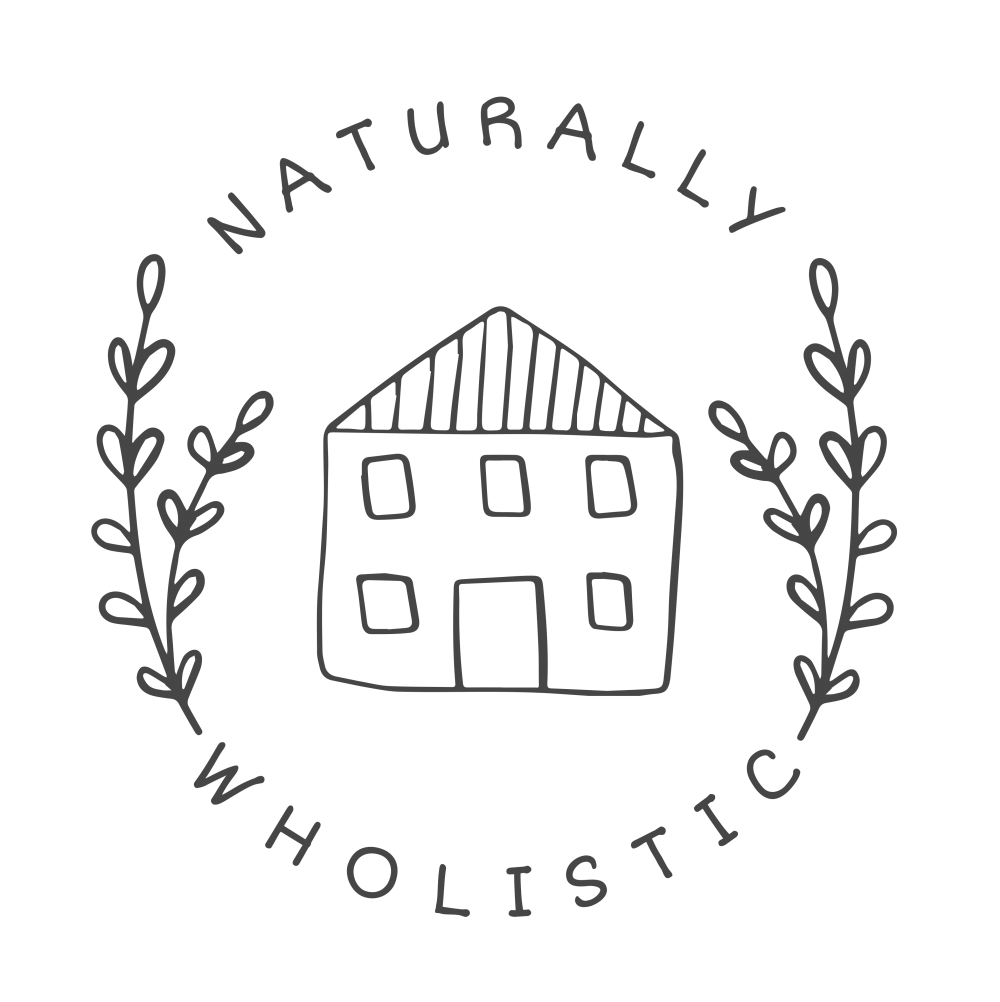Many of us are familiar with the practice of green washing, but have you ever heard of health washing? It’s a similar practice that manufacturers use to intentionally mislead consumers into thinking that food products are more wholesome and nutritious than they actually are. Not only does simple, clean packaging present a healthier vibe, labels and claims on the food packaging can also be wielded to deliberately manipulate shoppers. Unfortunately, this is a common practice and it can be downright confusing when trying to purchase healthy food for our families. We’re required now, more than ever, to be skeptically savvy by diligently reading labels and asking questions. We need to educate ourselves so we can make good choices for our families. And then when we know better, we can do better.
.jpg)
Though not all labels intentionally mislead consumers, they all have limitations. I want to explain some of the most confusing ones, as well as share label limitations, so that we can be armed with accurate information when shopping. In alphabetical order, the following labels are the ones I see the most in the grocery store. Some of them are good labels, but it’s essential to know exactly what they mean.
![]()
All Natural and Natural. These labels are one of my biggest pet peeves (next to natural flavoring), as “natural” is not regulated by the FDA and means very little on food packaging. The unenforced general guideline is that it only be used on packages with no synthetic additives. However, the guidelines don’t address food processing at all, including the use of pesticides or the type of feed or living conditions required for animals. And according to the FDA, this label is not meant to “describe any nutritional or other health benefit.” (source) Packages with this label can be a red flag, so it’s important to read the ingredients list and check into how they’re sourced to discern how natural the food is.
Certified Humane. Though this is a pretty good label, it has some limitations. It means that animals must have access to nutritious feed, though there isn’t a specific standard for what “nutritious” is. Animals also must not be tethered or confined to cages or stalls, and instead must be given comfortable living conditions to engage in their natural behaviors. There’s big debate about what is “natural” and “comfortable” for each species though, and the label does not guarantee animals have access to outdoor pastures.
.jpg)
Cholesterol Free. This health washed label is often added to food packages that would never have included cholesterol to begin with. Only animal products contain cholesterol. If this label is on a food product that has no animal products (like chips or crackers), the company may be trying to trick consumers into thinking the product is healthier when it’s simply not.
Free Range. Typically referring to eggs, free range implies that animals have access to an outdoor area, but there is no guarantee on how much time. Similarly, “cage free” implies animals have space to roam, but it isn’t necessarily outside, as they are often raised in large warehouses. Though that’s better than small cages all stacked together, it’s not exactly the healthy environment the label suggests.
Fresh. Though it implies a healthier product, this label simply means that the internal temperature of the food must never go below 26 degrees Fahrenheit (as in, it can’t be frozen). All cold foods can legally carry this label.
.jpg)
Gluten Free. Gluten free products are all the rage right now, but they are usually highly processed with lots of added sugars and ingredients to make up for the missing gluten. It’s important to check the ingredients.
Grass-Fed. This is a great step in properly raising livestock (because cows, for example, are not genetically designed to eat corn despite that being touted as a good thing in the U.S.), but it really only means that the animals were fed grass at some point. Consumers should look for 100% grass-fed before spending the extra money.
Low Carb. This one isn’t always misleading, but low carb foods can contain added chemical sweeteners, like aspartame, or processed fiber sources. This can also pertain to the newer “Keto” claim as well. It’s important to check the ingredient list.
Low-Sodium. Though the sodium is lowered in the food, the lost flavor is typically made up in the form of sugar.
Natural Flavors or Naturally Flavored. This is another one of my pet peeves because it can be such a misleading claim and food ingredient. It’s not much better than artificial color, and it really just means that the ingredients in the natural flavor contain “any product of roasting, heating or enzymolysis, which contains the flavoring constituents derived from a spice, fruit or fruit juice, vegetable or vegetable juice, edible yeast, herb, bark, bud, root, leaf or similar plant material, meat, seafood, poultry, eggs, dairy products, or fermentation products.” (source) Reading between the lines, this means that natural flavor needs only to contain a naturally-derived ingredient, it does not mean that it needs to only include natural ingredients. There is also no oversight about how the natural ingredients must be derived, which means that they can be sourced from GMOs. Natural flavors are then heavily chemically processed in a lab, making the original ingredients not really resemble their natural form at all. In addition, synthetic preservatives and stabilizers may be added. This can make it impossible to know what you’re actually eating, and food manufacturers aren’t required to disclose on the label how the natural flavor is created.
.jpg)
No High Fructose Corn Syrup. Though the package is correctly labeled, it doesn’t mean the product is without sugar. It’s important to check the label for hidden sugar ingredients, which can lurk behind lots of tricky names.
No Hormones or Steroids. Typically seen on chicken packaging, it’s important to know that the USDA bans the use of hormones and steroids in all chicken production. So this label applies to all chicken in every grocery store – it’s a meaningless and deceiving trick to make consumers think it’s healthier.
Non-GMO Project Verified. I look for this label when organic is not available. Though non-GMO is not always organic, it’s a better option than GMO food … and if any food product contains soybeans, corn, cotton, canola, sugar beets, or alfalfa, consumers can absolutely assume it’s GMO unless it has the non-GMO label. I’ve written before on why GMOs are bad news, so I won’t rehash here. Please read that post though! In order to achieve the non-GMO Project Verified label, manufacturers must be certified by independent third party companies to assure they meet the standards.
Certified Organic. This is the main label that I look for when purchasing food in a grocery store. Though it still has limitations, food producers must follow specific guidelines regarding organic practices to put this label on their packaging. Standards vary depending on the type of food being produced, but HERE is an overview. Most importantly to me, organics must be GMO-free and glyphosate-free. There are also other standards regarding farming and handling practices, including the requirement that animals be fed an organic diet and have access to an outdoor area. It also requires that at least 95% of the ingredients be organic. (Side note, the “made with organic ingredients” label requires at least 70% organic ingredients.) Though “organic” is probably the most difficult status to achieve, the practices aren’t always the most optimal for the animals and crops (or for consumers). Not only are some safer synthetic pesticides still allowed for pest control, there’s always the possibility that pesticide runoff from other local farms leaches into the soil on big organic farms. That’s why I try my best to buy from local farmers whenever possible, as many use beyond organic farming methods. Most of the farmers I know welcome questions about how they run their farms, so don’t be afraid to ask about how they control pests or how much time their animals spend on pasture. Especially if they are using safe, healthy practices, they are an open book! If they dance around questions, that’s a red flag. It’s so important to know how our food is sourced.
.jpg)
Pasture Raised. Though this sounds like a good label, it is not regulated and has no legal definition. That means consumers cannot know how much time or space the animals get outdoors, and it might be minimal. It’s really much better to get to know your local farmers and their practices, which often far exceed the practices of any large manufacturing label you might find in the store.
Pesticide Free. Although this label sounds good in theory, it is not regulated and really doesn’t mean anything. It’s better to choose USDA-certified organic foods, even despite the limitations.
Reduced Fat. These products have to be reduced in fat by at least 25% to get this label, but the flavor is often made up by extra sugars or additives. “Reduced fat” is almost always a red flag to mean high sugar. As a general rule, I steer clear of all reduced fat or fat free products.
Sugar Free. Though a product may have very low (or no) sugar, the sweetness is often substituted with chemical sweeteners like aspartame that are absolutely not healthy.
.jpg)
Trans Fat Free. The FDA allows up to 0.5gm of trans fat per serving to be considered zero. If the ingredient list includes “hydrogenated” or “partially hydrogenated” oils, it’s not truly a trans fat free product. It’s better to stick with products that use real oils like avocado or olive, avoiding vegetable, corn, and soy (which are all likely GMO).
Whole Grain. This can mean that just a minimal amount of whole grain is added into a mostly white flour product. And “multigrain” only means that more than one type of grain is used, even though they can all be refined and stripped of the good stuff. do not believe modern hybridized whole wheat flour is an ingredient we should eat often, but consumers should look for 100% whole wheat flour as the first ingredient to be sure they’re actually getting a whole grain product, as ingredients are listed in order of predominance by weight.
![]()
Bottom Line. It’s essential that we read ingredients and check labels so we know what’s in our food. Check servings sizes, as smaller serving sizes are often a sneaky way to get trace amounts of ingredients like trans fats into ingredient lists. My bet is that many manufacturers are banking on the fact that consumers won’t look, but all those extra additives in processed foods are really making us sick. Never before have more than 50% of children suffered from a chronic lifestyle disease.
I am not suggesting that we cut out all processed food for our families. Heck, I still buy the occasional bag of Doritoes or package of Twinkies. We can start reading labels to make informed decisions though. We need to take back our families’ wellness, and it can start with being a skeptically savvy shopper in the grocery store. When we know what all those confusing food labels actually mean, we can make healthier choices that empower our families to thrive.






